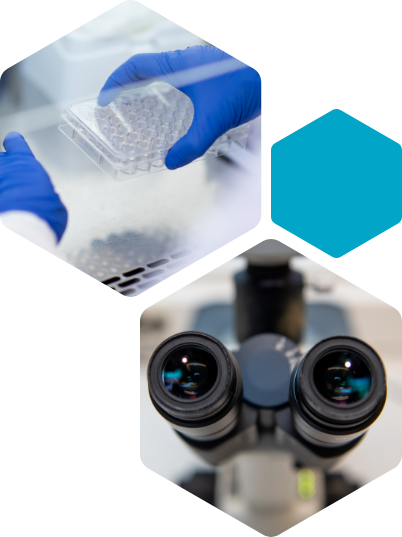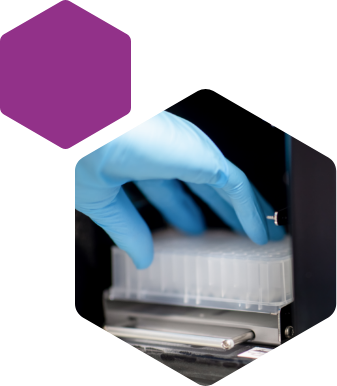Our services for in vitro Toxicology research
Our in vitro toxicology services are designed to be incorporated in the drug discovery process at an early stage to help with your internal decision making. The non-GLP assays deliver consistent results cost-efficiently with low compound consumption. The in vitro toxicology portfolio covers several assays for screening of cytotoxicity, genotoxicity, and cardiotoxicity, as well as assays to evaluate the mechanistic issues related to toxicity and direct hemolysis.
In addition to the toxicity assays mentioned above, we provide assays for screening of reactive drug metabolites and evaluation of reactivity of acyl-glucuronide metabolites which can be found under our in vitro metabolism studies, evaluation of BSEP transporter inhibition under Permeability and Transporters and also time-dependent inhibition studies of CYP-enzymes under Drug Interactions.
DILIscope hepatotoxicity screening service package

Hepatotoxicity assessment and drug induced liver injury (DILI) assessment
Drug-induced liver injury, DILI, is one of the major causes of acute liver failure as a result of direct toxicity from the administered drug or its metabolites. Therefore, it is essential to address hepatotoxicity risks early in the drug discovery process. Hepatotoxicity can be induced by different mechanisms such as mitochondrial dysfunction, increased oxidative stress, i.e. reactive oxygen species (ROS) formation, elevated fat accumulation in the liver or disturbances in the normal lysosomal function of hepatocytes.

Steatosis, characterized by fatty acid and lipid accumulation, and phospholipidosis, indicative of lysosomal dysfunction, can emerge at lower drug concentrations than cell necrosis, amplifying the risk. Furthermore, lysosomal sequestration or trapping may occur by certain types of compounds and may have significant implications for drug safety and efficacy, including induction of phospholipidosis. Mitochondrial insult and/or induced ROS are common early mechanisms for the majority of DILI outcomes. To evaluate hepatotoxicity, we utilize high-content imaging providing superior sensitivity and precision, and primary human hepatocytes as cell model, to provide relevant metabolic and mechanistic capacity.
All the below listed assays are part of our DILIscope service package and can be further complemented with BSEP, MRP2 and MRP3 inhibition and reactive metabolite screening.
Hepatotoxicity and cell stress with high-content imaging
The sensitive high-content screen cytotoxicity assay, conducted in pooled human hepatocytes, delivers multiple endpoints elucidating the mechanism behind potential hepatotoxicity. The assay gives information about basic functions such as cell loss and viability, membrane integrity as well as nuclei size and variation in their intensity. Additionally, mitochondrial function and production of reactive oxidative species are included; these are often the first signs of cellular toxicity and typical mechanisms inducing DILI.
For a deeper understanding, explore our fact sheet below. Feel free to engage with our experts to delve into further discussions or request a proposal through Admeshop!
Steatosis and phospholipidosis screening with high-content imaging
To assess hepatoxicity, we provide steatosis and phospholipidosis evaluation applying high-content imaging. Hepatocytes are exposed to the compound and then specific fluorescent dyes are utilized to stain neutral lipids and phospholipids allowing detection of subtle changes in lipid content. Automated high-content microscopes capture detailed images, which are then swiftly analyzed for results. Our screening assay provides fold changes compared to vehicle control, offering valuable insights into steatosis and phospholipidosis. Moreover, the utilization of primary hepatocytes in our assay ensures a robust cellular system with optimal metabolic activity, enhancing the reliability of outcomes.
For a deeper understanding, explore our fact sheet below. Feel free to engage with our experts to delve into further discussions or request a proposal through Admeshop!
Lysosomal trapping with high-content imaging
In the realm of drug development, understanding the intricate dynamics of lysosomal trapping is paramount. This phenomenon, characterized by the sequestration of drug candidates within lysosomes, exerts profound effects on pharmacokinetics, efficacy, and safety profiles.

Lysosomal sequestration predominantly affects certain basic, lipophilic compounds, including cationic amphipathic drugs, contingent upon their physicochemical properties. This phenomenon isn’t merely theoretical—several examples on the market underscore its practical significance in drug development.
Our lysosomal trapping assay uses Lysotracker dye for assessing the lysosomal sequestration potential of drug candidates. The fluorescence dye accumulates effectively into lysosomes (lysosomotropic), but in the presence of a substance going through lysosomal sequestration there will be a concentration dependent decrease in the lysosomal fluorescence signal, as the compound is competing with the dye. Applying fluorescence imaging allows the changes in the fluorescence signal to be accurately detected for obtaining IC50 values.
For a deeper understanding, explore our fact sheet below. Feel free to engage with our experts to delve into further discussions or request a proposal through Admeshop!
Genotoxicity Screening
- Bacterial reverse mutation test (MiniAMES and full five strain AMES)
- In vitro mammalian micronucleus test (MNT)
AMES test is used to identify compounds that can cause spontaneous point mutations such as base pair substitutions, deletions or duplications. These events can ultimately lead to cancer susceptibility. MNT assay is used to detect drug candidates causing chromosomal aberrations (aneugen) or breakages (clastogen) leading to perturbations in cell division. The resulting micronuclei adjacent to main nuclei are also a sign of genotoxicity.
AMES MPF™ (Xenometrix) is a robust assay utilising 384-plate format and two strains of bacterium S. typhimurium; TA98 and TA100 from which the former detects base substitutions and latter frameshift mutations. Also, other strains of S. typhimurium and E. coli are available to conduct a full AMES with five bacterial strains. MNT assay utilizes actively dividing ChoK1 cells in 96-well plate format. After exposure period the in vitro MicroFlow kit (Litron laboratories) is used to stain the micronuclei and analysis is performed by flow cytometry in a high-throughput manner.
Both genotoxicity assays of our in vitro toxicity screening service portfolio are OECD-compliant and deliver the mutagenic events / MN induction as fold-values compared to control either in presence or absence of metabolic activation (S9).
Cytotoxicity Screening
- Cell membrane integrity (LDH release)
- Cell viability (ATP content)
- HepG2 cells or other preferable cell type
Cytotoxicity (i.e., being toxic to cells) is almost by default an unwanted characteristic in drug discovery and development since cytotoxic compounds could have serious adverse effects. In addition, results of cytotoxicity assay can be used to guide testing concentrations of other assays, e.g., drug interaction studies to avoid overt toxicity. Fortunately, cytotoxicity can be studied by several in vitro methods based on measuring cell viability or cell death.
In our cell membrane integrity assay, cell death is assessed by measuring LDH release to cell culture medium, dead cell specific protease activity or using DNA-binding dye. Cell viability can be assessed in parallel to cell death by measuring the amount of ATP, as dead or dying cells have diminished ATP levels. All our cytotoxicity assays utilize fluorescence/luminescence analysis and deliver % cytotoxic / viable cells compared to control toxicant / vehicle. Comprehensive studies aim to identify the EC50 / lowest observed adverse effect concentration.
Cardiotoxicity Screening
- hERG Predictor fluorescence polarization assay (Invitrogen)

Cardiotoxicity is one of the main reasons for safety-related compound attrition and drug withdrawals, and therefore should be screened in the early stages of drug discovery. We offer a cost-efficient and rapid screening tool for evaluating cardiotoxicity as a part of our toxicity screening portfolio. Full electrophysiological cardiac safety panel is available via a partner.
Our rapid hERG Predictor fluorescence polarization assay is used for screening of compounds acting as potential ligands or blockers of hERG channel. The assay utilizes 384-well plate format and delivers IC50 values towards hERG blockage in relation to a well-known hERG ligand, E-4031 as well as negative control.
Mechanistic Toxicity Assays
- Mitochondrial toxicity (using galactose in medium)
- Oxidative stress (GSH/GSSG ratio)
- Caspase 3/7 activity (apoptosis induction)
Mechanistic toxicity assays are an important part of our in vitro toxicology service portfolio, as they provide further information about the cell toxicity displayed by the study compound. All assays are with fluorescence or luminescence end-points.
Mitochondrial toxicity is assessed by measuring cytotoxicity and ATP content in the cell using galactose as carbohydrate source during short compound exposure, using glucose as comparison. Study compound with no cytotoxicity but reduced ATP production augmented by galactose, is potential mitochondrial toxicant.
Oxidative stress is assessed by measuring the ratio of an abundant antioxidant, glutathione as reduced (GSH) or oxidized (GSSG) form, from which the latter is a sign of oxidative stress. Apoptosis (programmed cell death) is activated by protein-cleaving caspases; by measuring the common caspase 3/7 pathway activation it can be assessed whether study compound induces apoptosis.
Hematologic toxicology
- In vitro hemolysis
A form of hematologic toxicity can be detected with in vitro hemolysis assay. In hemolysis, blood erythrocytes disrupt leading to hemoglobin release to plasma. According to FDA, it is of importance to detect the hemolytic potential of formulation excipients used for i.v. administration. Drugs and their metabolites may cause direct or immunological, delayed hemolysis. This assay detects the direct hemolysis as %, and also the rate of hemolysis can be determined.
